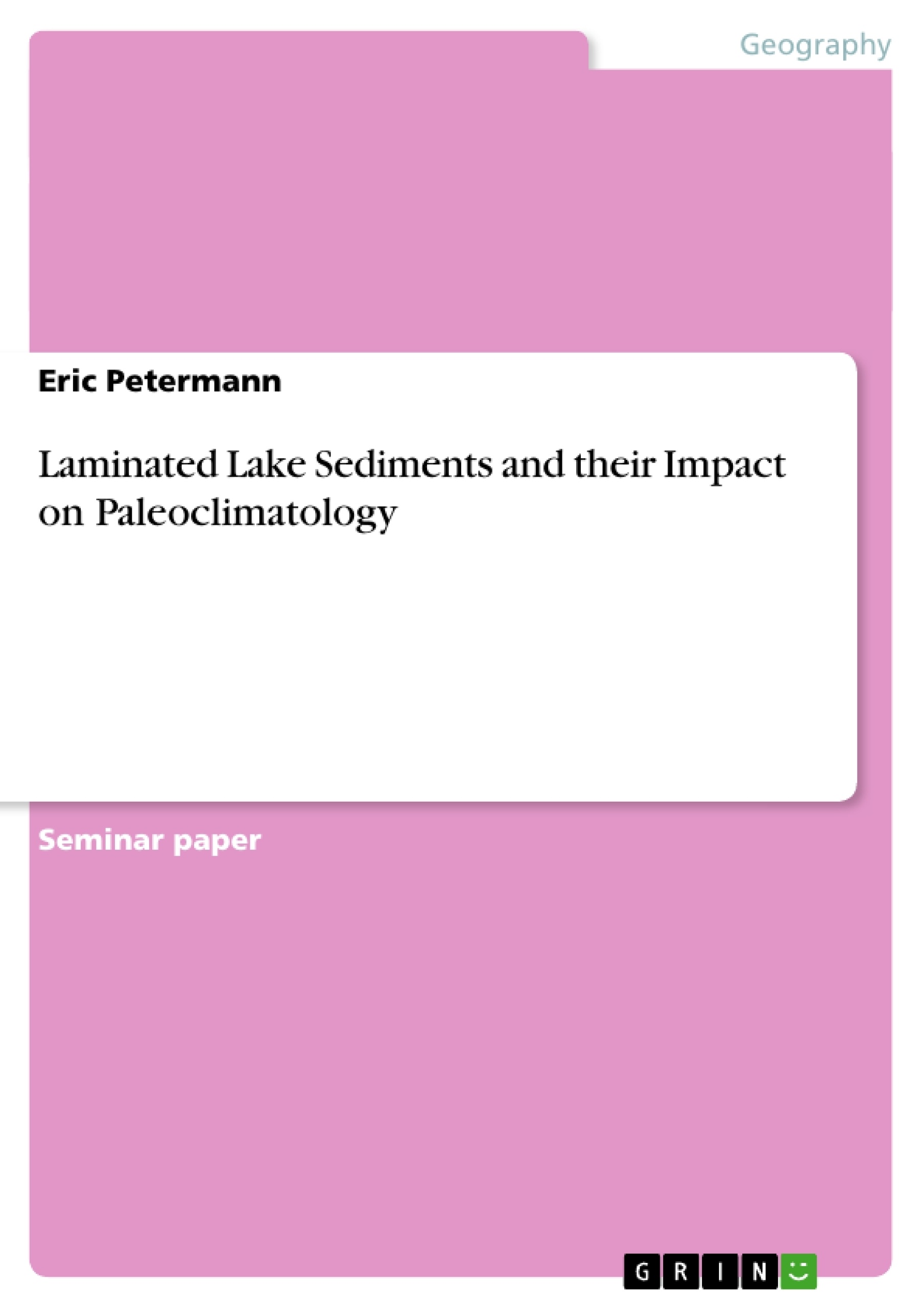Zolitschka (1998) defined varves as laminated sediments occurring in stationary water bodies.
Their striking feature is a seasonal, rhythmical build-up of thin, horizontal layers with a
changing composition.
Since the early 20th century, this type of sediment has been used for establishing exact
geochronologies. In the course of the climate change debate, and the subsequent demand
for high-resolution paleoclimatic data, they have come back into the focus of earth scientists.
A crucial advantage of varved sediments is that they provide two different kinds of information
on a sediment profile: an absolute chronology and high-resolution paleoclimatic information.
Combining these two attributes offers an absolute dated time series of paleoclimatic
proxy-data. Furthermore, additional analyses of the same profile can be dated.
Varved sediments can be found in recent lakes as well as in paleolakes. However, their
occurrence is limited to only a few sites as a consequence of the special circumstances
necessary for their generation. Varved sediments in recent lakes are especially found in
lakes, which are small and deep. These preconditions are often met by maars, where a lot
of investigations are done (Brauer et al. 1999a, 1999b; Litt et al. 2001). Additionally, varved
sediments are even found in ancient proglacial lakes (Moscariello et al. 2000) to give an
example.
Inhaltsverzeichnis (Table of Contents)
- Introduction
- Laminated lake sediments
- Different types of varved sediments
- Driving forces of varve sedimentation
- Reconstructions of climate variability during transition Pleistocene/Holocene in Central Europe using laminated Lake Sediments from four sites
- Methods and results
- Correlation and synchronisation
- Reconstructions of climate variability during at LGM in the Near East
- Previous studies at Lake Lisan
- Work placement studies
- Implications of Lake Lisan on the understanding of climate dynamics
- Conclusion
- References
Zielsetzung und Themenschwerpunkte (Objectives and Key Themes)
This study aims to analyze laminated lake sediments and their application in paleoclimatology, particularly focusing on reconstructing climate variability during specific periods in Central Europe and the Near East. The study investigates the potential of these sediments to provide high-resolution paleoclimatic data and a detailed understanding of climate dynamics.
- Varved sediments as a tool for paleoclimatic reconstruction
- Different types of varved sediments and their formation processes
- Climate variability during the transition from Pleistocene to Holocene in Central Europe
- Climate dynamics during the Last Glacial Maximum (LGM) in the Near East
- Implications of Lake Lisan studies on understanding climate dynamics
Zusammenfassung der Kapitel (Chapter Summaries)
The introduction defines varves as laminated sediments in stationary water bodies with distinctive seasonal layering. Their significance in providing both chronology and paleoclimatic information is emphasized, making them valuable for high-resolution paleoclimatic studies.
Chapter 2 explores different types of varved sediments, including organic, evaporative, and clastic varves. The factors influencing varve sedimentation are also discussed, highlighting the importance of climate and catchment characteristics.
Chapter 3 focuses on using laminated lake sediments to reconstruct climate variability during the transition from Pleistocene to Holocene in Central Europe. It presents methods and results based on analyses of sediments from four sites in the region.
Chapter 4 delves into the understanding of climate dynamics during the Last Glacial Maximum (LGM) in the Near East, specifically focusing on Lake Lisan. It reviews previous studies and presents findings from the author's work placement studies.
Schlüsselwörter (Keywords)
The key concepts and terms explored in this study include varved sediments, paleoclimatology, climate variability, Pleistocene, Holocene, Central Europe, Near East, Lake Lisan, Last Glacial Maximum (LGM), high-resolution paleoclimatic data, and climate dynamics.
- Citar trabajo
- Eric Petermann (Autor), 2008, Laminated Lake Sediments and their Impact on Paleoclimatology, Múnich, GRIN Verlag, https://www.grin.com/document/139189



